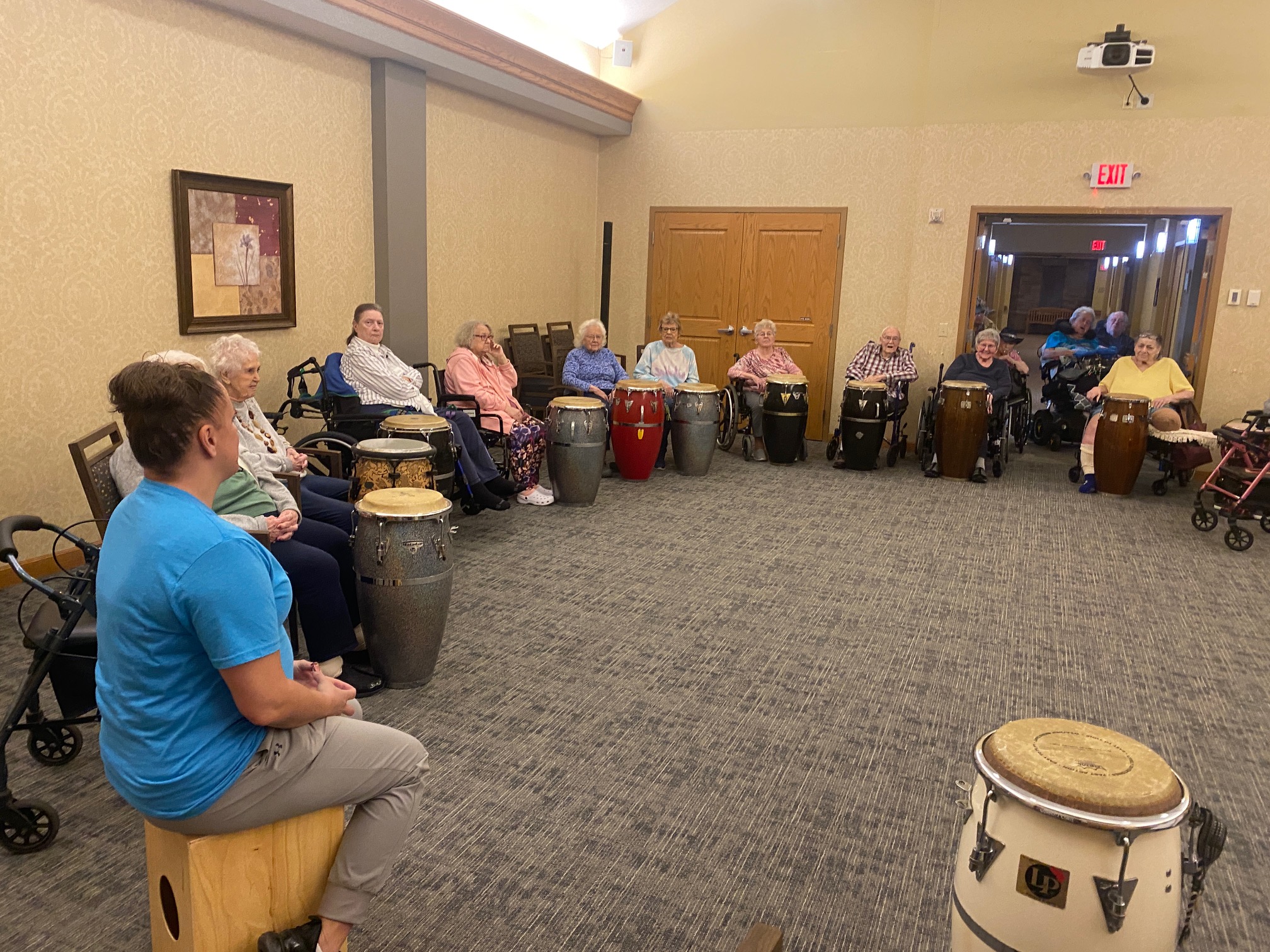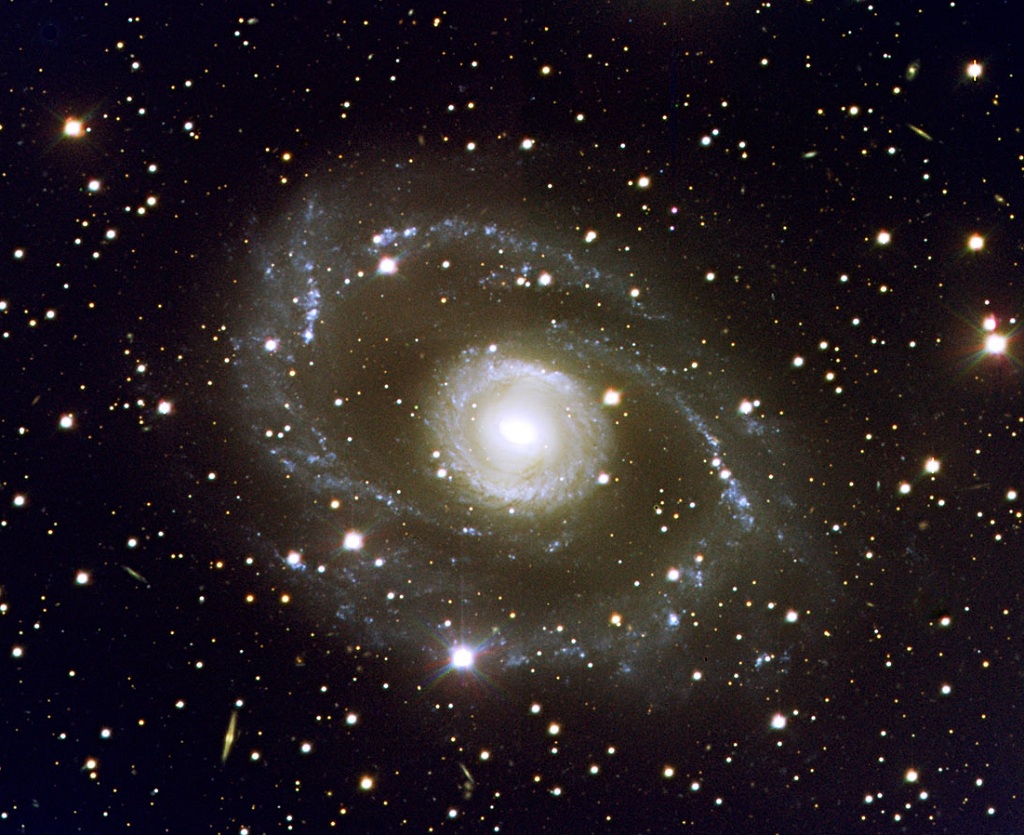Blog
the Great Carina Nebula is more modestly known as NGC 3372. One of our Galaxy’s largest star forming regions, it spans over 300 light-years. Like the smaller, more northerly Great Orion Nebula, the Carina Nebula is easily visible to the unaided eye. But at a distance of 7,500 light-years it lies some 5 times farther away. This stunning telescopic view reveals remarkable details of the region’s glowing filaments of interstellar gas and obscuring cosmic dust clouds. The Carina Nebula is home to young, extremely massive stars, including the still enigmatic variable Eta Carinae, a star with well over 100 times the mass of the Sun. Eta Carinae is the bright star above the central dark notch in this field and left of the dusty Keyhole Nebula (NGC 3324).

Dudley Stuart John Moore CBE (19 April 1935 – 27 March 2002) was an English actor, comedian, musician and composer. Moore first came to prominence in the UK as a leading figure in the British satire boom of the 1960s. He was one of the four writer-performers in the comedy revue Beyond the Fringe from 1960 that created a boom in satiric comedy. With a member of that team, Peter Cook, Moore collaborated on the BBC television series Not Only… But Also. As a popular double act, Moore’s buffoonery contrasted with Cook’s deadpan monologues. They jointly received the 1966 British Academy Television Award for Best Entertainment Performanceand worked together on other projects until the mid-1970s, by which time Moore had settled in Los Angeles to concentrate on his film acting.
Moore’s career as a comedy film actor was marked by hit films, particularly Bedazzled (1967), set in Swinging Sixties London (in which he co-starred with Cook) and Hollywood productions Foul Play (1978), 10 (1979) and Arthur (1981). For Arthur, Moore was nominated for the Academy Award for Best Actor and won a Golden Globe Award. He received a second Golden Globe for his performance in Micki & Maude (1984). Moore was awarded a star on the Hollywood Walk of Fame in 1987 and was made a CBE by Queen Elizabeth II at Buckingham Palace on 16 November 2001 in what was his last public appearance.
more...Edwin H. Kramer (born 19 April 1942) is a South African-born recording producer and engineer. He has collaborated with several artists now in the Rock and Roll Hall of Fame, including Jimi Hendrix, the Beatles, David Bowie, the Rolling Stones, Led Zeppelin, Eric Clapton, the Kinks, Kiss, John Mellencamp, and Carlos Santana, as well as records for other well-known artists in various genres.
Kramer’s film soundtrack credits include Blue Wild Angel: Live at the Isle of Wight, Festival Express, Jimi Plays Monterey, Jimi Plays Berkeley, Live at the Fillmore East, Mad Dogs and Englishmen, The Pursuit of Happiness, Rainbow Bridge, The Song Remains the Same, and Woodstock: Music from the Original Soundtrack and More. Kramer was interviewed extensively in Jimi Hendrix: Hear My Train a Comin’, a two-hour American Masters documentary which debuted in November 2013.
He is also a photographer who has exhibited a number of his intimate images of performers, particularly Hendrix, with whom he worked on Are You Experienced, Axis: Bold as Love, Electric Ladyland, Band of Gypsys, and The Cry of Love, as well as the posthumous Valleys of Neptune, People, Hell and Angels, Miami Pop Festival, and other releases produced through Experience Hendrix, the organization formed by Hendrix’s heirs.
more...“The name is taken from the village of Paterna de Rivera, near Jerez de la Frontera. The superstitious legend connected with its origin endows the flamenco palo Peteneras with a certain mystique. According to this legend, a beautiful young prostitute called Dolores died a violent death at the hands of one of her lovers. Due to her irresistible power of seduction she was called the “damnation of men”. For some authors, the word prostitute is a little severe and they prefer a more poetic description such as, a beautiful young temptress who stole men’s hearts.
After her death, songs were created around the story. The superstition surrounding Peteneras is directly connected with the misfortunes that followed later public performances. One account is of a dancer who played the part of Petenera and died a choreographed death on stage, following the story line from the legend. The four male dancers involved in the show carried her off stage on their shoulders singing, “La Petenera has died and we are taking her to be buried”… Backstage they discovered that the dancer really was dead, apparently from a heart attack.
Every year in July, the people in the village of Paterna pay homage to this form of cante and to Dolores by hosting a national Peteneras song competition. There are some who believe that Peteneras was originally a song of the Sephardic Jews. The evidence comes from a verse which makes reference to a beautiful Jewess on her way to a synagogue. This would date the song back as far as 1492, which is when the Jews (and the synagogues) disappeared from Spain“
more...


From our vantage point in the Milky Way Galaxy, we see NGC 1232 face-on. Nearly 200,000 light-years across, the big, beautiful spiral galaxy is located some 47 million light-years away in the flowing southern constellation of Eridanus. This sharp, multi-color, telescopic image of NGC 1232 includes remarkable details of the distant island universe. From the core outward, the galaxy’s colors change from the yellowish light of old stars in the center to young blue star clusters and reddish star forming regions along the grand, sweeping spiral arms. NGC 1232’s apparent, small, barred-spiral companion galaxy is cataloged as NGC 1232A. Distance estimates place it much farther though, around 300 million light-years away, and unlikely to be interacting with NGC 1232. Of course, the prominent bright star with the spiky appearance is much closer than NGC 1232 and lies well within our own Milky Way.

Daniel Richard Gottlieb (born April 18, 1953) is an American drummer. He was a founding member of the Pat Metheny Group and was co-founder of Elements with Mark Egan.
Gottlieb was born in New York City on April 18, 1953. He took lessons from Mel Lewis and Joe Morello and graduated from the University of Miami in 1975. Morello was his lifelong teacher, beginning in 1968 and through the late 1990s. He became a member of the Gary BurtonQuartet in 1976 with Pat Metheny. He was one of the original members of The Pat Metheny Group from 1977 to 1983. Bassist Mark Egan was also in Metheny’s first group. Egan and Gottlieb formed the band Elements.
In 1982, Gottlieb toured with Flora Purim and Airto Moreira. Gottlieb played with singer Michael Franks in 1983, and the following year toured with trumpeter Randy Brecker and saxophonist Stan Getz. From 1984-1986, he was a member of the Mahavishnu Orchestra led by guitarist John McLaughlin and is featured in the video live at Montreux. He is also featured on the recording Adventures in Radioland. He was also part of the band Second Story Television in 1985 and was a regular member of Gil Evans‘ orchestra from 1986 until Evans died two years later. Gottlieb is featured on a variety of recordings with the band, including Bud and Bird and the 75th Birthday Concert.
more...Eurreal Wilford “Little Brother” Montgomery (April 18, 1906 – September 6, 1985) was an American jazz, boogie-woogie and blues pianist and singer.
Largely self-taught, Montgomery was an important blues pianist with an original style. He was also versatile, working in jazz bands, including larger ensembles that used written arrangements. He did not read music but learned band routines by ear.
Montgomery was born in Kentwood, Louisiana, United States, a sawmill town near the Mississippi border, across Lake Pontchartrain from New Orleans, where he spent much of his childhood. Both his parents were of African-American and Creek Indian ancestry. As a child he looked like his father, Harper Montgomery, and was called Little Brother Harper. The name evolved into Little Brother Montgomery, and the nickname stuck. He started playing piano at the age of four, and by age 11 he left home for four years and played at barrelhouses in Louisiana. His main musical influence was Jelly Roll Morton, who used to visit the Montgomery household.
more...Leo Parker (April 18, 1925 – February 11, 1962) was an American jazz musician, who primarily played baritone saxophone. Parker was the earliest baritone saxophonist to play bebop. Born in Washington, D.C., Parker studied alto saxophone in high school and played this instrument on a recording with Coleman Hawkins in 1944.
Parker switched to baritone saxophone in 1944 when he joined Billy Eckstine‘s bebop band, playing there until 1946. In 1945, he was a member of the “Unholy Four” of saxophonists, with Dexter Gordon, Sonny Stitt and Gene Ammons. He played on 52nd Street in New York with Dizzy Gillespie in 1946 and Illinois Jacquet in 1947-48, and later recorded with Fats Navarro, J.J. Johnson, Teddy Edwards, Wardell Gray and Charles Thompson. He and Thompson had a hit with their Apollo Records release, “Mad Lad”. In the 1950s, Parker had problems with drug abuse, which interfered with his recording career. He made two comeback records for Blue Note in 1961, but the following year he died of a heart attack in New York City. He was 36.
more...Clarence “Gatemouth” Brown (April 18, 1924 – September 10, 2005) was an American singer and multi-instrumentalist from Louisiana. He won a Grammy Award for Best Traditional Blues Album in 1983 for his album, Alright Again!.
Brown was born in Vinton, Louisiana, and raised near Orange, Texas. His father was a railroad worker and local musician who taught him several musical instruments, including fiddle by age 5; as well as piano and guitar. He had at least one brother.
Brown was performing guitar by age ten. He also played drums in swing bands as a teenager.
more...Teaching nine sessions of Rhythm Roots Workshop Residency at Ecumen Lakeview Commons Assisted Living and Memory Care in Maplewood on Wednesdays April 17th thru June 12th 2024 1-230pm. Celebrating world cultures through drumming and chanting. https://www.ecumenlakeviewcommons.org/

Located about 155 million light-years away towards the southern constellation Centaurus (the Centaur), ESO 269-G57 is a spectacular spiral galaxy of symmetrical shape that belongs to a well-known cluster of galaxies seen in this direction. An inner ‘ring’, of several tightly wound spiral arms, surrounded by two outer ones that appear to split into several branches, are clearly visible. Many blue and diffuse objects are seen — most are star-forming regions. ESO 269-G57 extends over about 4 arc minutes in the sky, corresponding to nearly 200,000 light-years across. Resembling a large fleet of spaceships, many other faint, distant galaxies are visible in the background.Obtained with VLT ANTU and FORS1 in the morning of March 27, 1999. The full field measures 6.8 x 6.8 arcmin2. North is up and East is to the left. The image is based on data collected in the B, V, R and H-alpha filters, for a total exposure time of a little over one hour (64 min). The data were extracted from the ESO Science Archive and further processed by Henri Boffin (ESO).

Jan Hammer (born 17 April 1948) is a Czech-American musician, composer, and record producer.[1] He rose to prominence while playing keyboards with the Mahavishnu Orchestra during the early 1970s, as well as with his film scores for television and film including “Miami Vice Theme” and “Crockett’s Theme“, from the 1980s television program Miami Vice. He has continued to work as both a musical performer and producer.
Hammer has collaborated with some of the era’s most influential jazz and rock musicians such as John McLaughlin, Jeff Beck, Billy Cobham, Al Di Meola, Mick Jagger, Carlos Santana, Stanley Clarke, Tommy Bolin, Neal Schon, Steve Lukather, John Abercrombie and Elvin Jones. He has composed and produced at least 14 original motion picture soundtracks, the music for 90 episodes of Miami Vice and 20 episodes of the television series Chancer.
His compositions have won him several Grammy Awards.
more...Charles Anthony “Buster” Williams (born April 17, 1942) is an American jazz bassist. Williams is known for his membership in pianist Herbie Hancock‘s early 1970s group, as well as working with guitarist Larry Coryell, the Thelonious Monk repertory band Sphere and as the accompanist of choice for many singers, including Nancy Wilson.
Williams’ father, Charles Anthony Williams Sr., was a musician who played bass, drums, and piano, and had band rehearsals in the family home in Camden, New Jersey, exposing Williams to jazz at an early age. Williams was particularly inspired to focus on bass after hearing his father’s record of Star Dust, performed by Oscar Pettiford, and started playing in his early teens.
He had his first professional gig while he was still a junior high school student, filling in for Charles Sr., who had double booked himself one evening. Williams later spent his days practicing with Sam Dockery, who was playing in Jimmy Heath‘s band in Philadelphia on a regular double bill with Sam Reed. Charles Sr. hosted a jam session at a club called Rip’s and gave Williams the opportunity to put his own group together for a Monday night show in 1959, and in an effort to work his way into Heath’s band, Williams hired Sam Reed. The plan worked, as two days later Reed contacted Williams about playing in his band that coming Saturday, which demonstrated Williams’ talent to Heath, who in turn hired Williams the following week.
more...Donald Christopher Barber OBE (17 April 1930 – 2 March 2021) was an English jazz musician, best known as a bandleader and trombonist. He helped many musicians with their careers and had a UK top twenty trad jazz hit with “Petite Fleur” in 1959. These musicians included the bluessinger Ottilie Patterson, who was at one time his wife, and Lonnie Donegan, whose appearances with Barber triggered the skiffle craze of the mid-1950s and who had his first transatlantic hit, “Rock Island Line“, while with Barber’s band. He provided an audience for Donegan and, later, Alexis Korner, and sponsored African-American blues musicians to visit Britain, making Barber a significant figure in launching the British rhythm and blues and “beat boom” of the 1960s.
more...Johnny St. Cyr (April 17, 1890 – June 17, 1966) was an American jazz banjoist and guitarist. For banjo his by far most used type in records at least was the six string one. On a famous “action photo” with Jelly Roll Morton’s Red Hot Peppers he is holding a four string banjo, a Paramount Style A. There is, however, no verified information if he ever used such an instrument on records.
St. Cyr was born in New Orleans, Louisiana and raised Catholic. He played for several leading New Orleans bands before moving to Chicago in 1923. He is best remembered as a member of Louis Armstrong’s Hot Five and Hot Seven bands. He also played with Jelly Roll Morton‘s Red Hot Peppers. He composed the standard “Oriental Strut”, known for its adventurous chord sequence.
During the 1950s, he performed and led a group named Johnny St. Cyr and His Hot Five and recorded with Paul Barbarin and George Lewis. From 1961 until his death in 1966, at the age of 76, St. Cyr was the bandleader of the Young Men from New Orleans, who performed at Disneyland. He died in Los Angeles, California, and is buried in Evergreen Cemetery, in Los Angeles.
more...More Posts
- Daily Roots with Junior Marvin
- Surviving the Pandemic and Realizing Racial Justice
- The Cosmos with NGC 1365
- Dave Weckl
- David Bowie
- Bill Graham
- Kelucharan Mohapatra
- Elvis Presley
- Tampa Red
- Flamenco Fridays with Tomatito
- Daily Roots with Fitzroy Drummond and Earl Lindo
- Daily Roots with Earl Lindo
- Surviving the Pandemic and Realizing Racial Justice
- The Cosmos with a Total Solar Eclipse 2020
- Earl Lindo
- Kenny Loggins
- Sam Woodyard
- Chano Pozo
- Bobo Jenkins
- World Music with Culture Musical Club